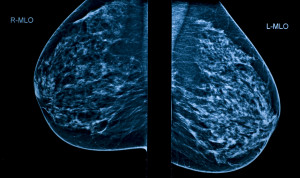AARP Hearing Center
Experts Argue Against New Mammogram Guidelines
By Candy Sagon, November 2, 2015 12:10 PM

The American Cancer Society’s newly announced change in mammogram guidelines has made the debate on when, and how frequently, to get breast cancer screening even more confusing for women.
Even worse, this change was based on the advice of a panel that “did not include a single surgeon, radiologist or medical oncologist who specializes in the care and treatment of breast cancer. Not one,” said an op-ed column in the New York Times written by three breast cancer experts who bashed the new revisions.
Read the latest exercise and memory-sharpening tips, health care reform and more! — AARP Health Newsletter »
Ironically, the cancer society’s announcement came during October, Breast Cancer Awareness Month, when women are typically urged to do more to prevent the disease that kills 40,000 annually.
Instead, the group backtracked from its long-standing recommendations and now is telling women that they can wait longer, until age 45, to start getting annual mammograms; after age 55, the new guidelines say they don’t need to get mammograms as frequently — a surprising change considering government data shows that a woman’s risk of being diagnosed increases between ages 50 and 70.
Kevin Oeffinger, M.D., chair of the breast cancer guideline panel, said in a statement that the decision to screen every two years for postmenopausal women was “based on the fact that post-menopausal breast cancers tend to develop more slowly.” However, women may still choose to continue annual screening at age 55, he added.
The new guidelines also don’t match guidelines issued earlier by three other major medical groups, adding more murkiness to the question of when to get a mammogram.
Up until now, the American Cancer Society had made it simple: Starting at age 40, women should get a screening mammogram once a year, as well as regular breast exams by their doctor (or a self-exam) to check for lumps.
Now, in a major shift, the society has changed its guidelines:
- Women ages 45 to 54 at average risk: Get a mammogram every year.
- Women age 55 and older: Get a mammogram every two years.
- A physical breast exam to feel for lumps: Not recommended.
And here’s how this compares with other organizations:
- American College of Radiology: Starting at age 40, get a mammogram every year.
- American College of Gynecology and Obstetrics: At ages 40 to 49, get a mammogram every year or every two years; age 50 and older, a mammogram every year.
- U.S. Preventive Services Task Force: At age 50, get a mammogram every two years, ending at age 75.
No wonder women are confused. Even the groups who are supposed to help them decide can’t decide. Indeed, more than half of women age 40 and older — and 65 percent of those age 50-plus — still think they should get a mammogram every year, a recent NPR health poll found.
Part of the reason for the different guidelines is the debate over whether the benefits of mammograms in catching cancer early are outweighed by the risk of possible false-positive results that could lead to “stress and anxiety” from unnecessary biopsies or additional screening — an argument that a Washington Post editorial called “both patronizing and unscientific.”
Breast surgeon Magdalena Plasilova, director of breast health services at Brookdale Hospital and Medical Center in Brooklyn, also pointed out that many of these guidelines don’t take into account the differences in risk among various racial and ethnic groups.
“For example, African American patients are diagnosed later, with more advanced tumors, and we do not know the biological factors contributing to that,” she said in an interview, adding, “Most of my patients don’t know if they’re at average or high risk. They just want to know when they should start getting screened.”
For her part, “I am going to stick with the recommendation of age 40 for now. I would wait for more evidence that 45 is really a better age.”
Get discounts on prescriptions, health exams, eye care and more — AARP Member Advantages »
Daniel Kopans, a professor of radiology at Harvard Medical School and a radiologist at Massachusetts General Hospital, agrees that age 40 is a better standard for starting screening than age 45 or 50.
“The scientific evidence shows that the most lives are saved by annual mammography starting at 40 years old,” he told the Post, including a 2013 Harvard study that found that half of the women who died from breast cancer were diagnosed while in their 40s. About 70 percent of them were not being screened.
“There are more than 30,000 women diagnosed with breast cancer in the U.S. each year while in their forties. Why would you encourage women to delay screening until the age of 50, and then give cancers years to grow and spread? This makes no sense,” he said.
Photo: yumiyum/iStock
Also of Interest
- Bad news, bacon lovers: Processed meat linked to cancer
- Great jobs for workers over 50
- Get Help: Find out if you're eligible for public benefits with Benefits QuickLINK
- Join AARP: Savings, resources and news for your well-being
See the AARP home page for deals, savings tips, trivia and more.































































